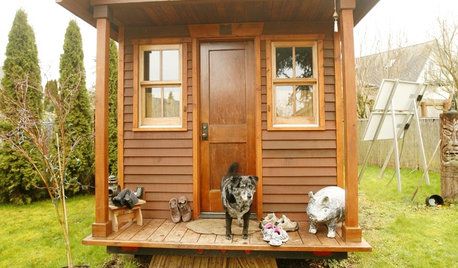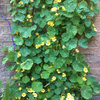why oh why are my zinnias always a failure???
phyl345
14 years ago
Related Stories

BEDROOMSGuessing Game: What Might Our Bedrooms Say About Us?
For entertainment only; actual accuracy may vary. Always don fun goggles and engage your imagination before playing!
Full Story
KITCHEN WORKBOOK8 Steps to Surviving a Kitchen Remodel
Living through a kitchen remodel isn’t always fun, but these steps will help you work around a kitchen in disarray
Full Story
MODERN ARCHITECTURERoots of Style: International Style Celebrates Pure Form
Using technology and materials of the time, International style is always current. See its expression in these 16 homes around the world
Full Story
REMODELING GUIDESA Pattern Language: Light From Two Sides
For a More Successful Room, Bring In Daylight From Two Directions
Full Story
GARDENING GUIDESHouzz Call: What’s Your Favorite Backyard Beauty?
The simple, honest daisy is this writer’s go-to garden flower. We want to hear which plant, flowering or otherwise, gives you special joy
Full Story
SMALL SPACESLife Lessons From 10 Years of Living in 84 Square Feet
Dee Williams was looking for a richer life. She found it by moving into a very tiny house
Full Story
KITCHEN DESIGNWonderful Wood Countertops for Kitchen and Bath
Yes, you can enjoy beautifully warm wood counters near water sans worry (almost), with the right type of wood and sealer
Full Story
FURNITUREObjects of Desire: New Takes on the Tufted Sofa
From curving round a bend to rolling with steampunk, these decidedly different chesterfields fit more than traditional settings
Full Story
FALL GARDENINGReflecting on a Gardening Year
Mistakes and successes, surprises and comforts. The garden helps us grow in new ways every year
Full Story









zen_man
phyl345Original Author
Related Professionals
Tempe Landscape Architects & Landscape Designers · Wixom Landscape Architects & Landscape Designers · Cambridge Landscape Contractors · Cupertino Landscape Contractors · Duarte Landscape Contractors · East Hanover Landscape Contractors · Lehigh Acres Landscape Contractors · Lyndhurst Landscape Contractors · Peachtree City Landscape Contractors · Whitehall Landscape Contractors · Bensenville Landscape Contractors · Ferguson Landscape Contractors · Raynham Driveway Installation & Maintenance · Dearborn Decks, Patios & Outdoor Enclosures · Windsor Decks, Patios & Outdoor Enclosurescalistoga_al ca 15 usda 9
mxk3 z5b_MI
zen_man
lafincadora
tammyinwv
oilpainter
prairiegirlz5
thrills
dianasan
ninam
zen_man
veggieswirl